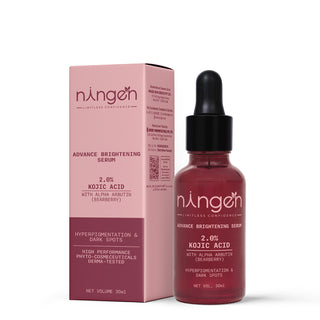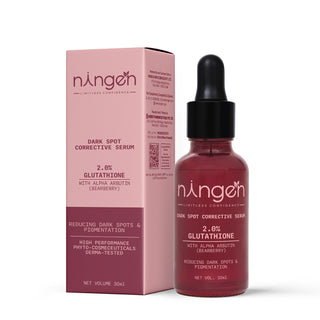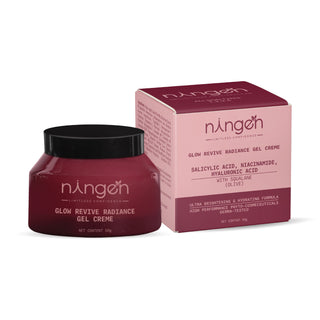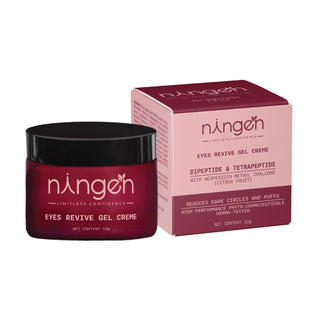TL;DR
The most common mistakes in a skincare routine for pigmentation that worsen dark spots include skipping daily sunscreen (even indoors), overusing active ingredients too quickly, over-exfoliating, applying products to completely dry skin, incorrect product layering, expecting overnight results, and picking at pigmented areas. Quick fixes include using broad-spectrum SPF 30+ sunscreen daily, introducing active ingredients slowly (2-3x per week initially), limiting exfoliation to 1-2x weekly, applying serums to slightly damp skin for better absorption, following proper layering order (thinnest to thickest), being patient for 3-6 months minimum for results, and maintaining a strict hands-off policy for dark spots.
If you've been battling dark spots, melasma, or hyperpigmentation for months (or even years) without seeing results, the problem might not be what you're not doing; it could be what you're doing wrong. Many people unknowingly make critical mistakes in their skincare routine for pigmentation, which can make their dark spots darker and more stubborn.
Dermatology experts who have helped countless clients overcome pigmentation issues have noticed recurring errors. Most of these hyperpigmentation mistakes seem logical on the surface, which is why they’re so common. But here’s the good news: once identified and corrected, these mistakes can lead to faster, more dramatic improvements in skin tone.
In this comprehensive guide, we'll uncover 7 surprising mistakes that worsen your skin care routine for pigmentation, plus expert-backed solutions to get your skin back on track. Let’s dive in!
In this Guide;
7 Mistakes That Worsen Pigmentation
Mistakes That Worsen Pigmentation
Let’s break down the 7 surprising mistakes you might be making, and how to fix them.
1. Skipping Sunscreen Indoors (The #1 Pigmentation Saboteur)
The Mistake
You religiously apply sunscreen when heading to the beach but skip it on cloudy days or when working from home. This is perhaps the biggest mistake people make when dealing with pigmentation issues.
Here's what most people don't realize: UV rays penetrate windows, and even indoor lighting can trigger melanin production in sensitive skin. If you have melasma or post-inflammatory hyperpigmentation, your skin is essentially in "hyperdrive" mode; it's primed to create more pigment at the slightest provocation.
The Fix: Daily Broad-Spectrum Protection
Make sunscreen non-negotiable, even indoors. Choose a broad-spectrum SPF 30-50 that protects against both UVA (aging/pigmentation rays) and UVB (burning rays).
Pro tip: Look for sunscreens containing zinc oxide or titanium dioxide if you have sensitive skin that tends to darken. Chemical sunscreens can sometimes irritate reactive skin and worsen pigmentation.

2. Going Overboard with Active Ingredients
The Mistake
When you discover powerful ingredients like AHA/BHA, Retinoids, or Vitamin C, it's tempting to use them all at once, every day, thinking "more is better." This aggressive approach often backfires spectacularly.
Over-application of actives can cause irritation, redness, and inflammation, which paradoxically triggers more pigmentation. Your skin goes into defense mode and produces excess melanin to protect itself from what it perceives as an attack.
The Smart Approach: Slow and Steady Integration
Start low, go slow is the golden rule for pigmentation-fighting actives.
Week 1-2: Use your new active ingredient 2-3 times per week
Week 3-4: Increase to every other day if tolerated well
Week 5+: Daily use only if your skin shows no irritation
Layering order for multiple actives:
-
Morning: Vitamin C serum + sunscreen
-
Evening: Retinoid OR AHA/BHA (alternate nights)
-
Never mix: Vitamin C + retinoids, or retinoids + AHAs on the same night.
Navigating Active Ingredient Compatibility here-

Also read: How to get rid of pigmentation & dark spots with Niacinamide.
3. Over-Exfoliating Your Way to Darker Spots
The Mistake
Seeing dark spots and immediately reaching for scrubs, brushes, or daily chemical exfoliants seems logical, you want to "scrub away" the pigmentation. Unfortunately, aggressive exfoliation often makes dark spots skincare mistakes worse by causing micro-injuries that trigger more melanin production.
The Gentle Exfoliation Strategy
Limit exfoliation to 1-2 times per week maximum. Choose either physical OR chemical exfoliation, not both.
Chemical exfoliation options:
-
Lactic acid (5-10%): Gentle, hydrating, good for sensitive skin
-
Glycolic acid (5-15%): More potent, faster results, higher irritation risk
-
Salicylic acid (0.5-2%): Best for acne-related pigmentation
Physical exfoliation rules:
-
Use soft, circular motions
-
Never scrub actively inflamed or broken-out areas
-
Choose fine-grain scrubs over harsh, jagged particles
4. Applying Products to Bone-Dry Skin
The Mistake
You cleanse your face, wait for it to air dry completely, then apply your serums and treatments. This common routine step significantly reduces the effectiveness of your pigmentation-fighting ingredients.
Most active ingredients penetrate better into slightly damp skin. When your skin is completely dry, it creates a barrier that prevents optimal absorption of your expensive treatments.
The Damp Skin Application Method
Apply serums and treatments to barely damp skin for maximum penetration.
Perfect timing:
-
Cleanse your face
-
Gently pat with a clean towel (don't rub completely dry)
-
Immediately apply your treatment products while skin is still slightly moist
-
Follow with moisturizer to seal everything in
Bonus tip: If you live in a dry climate, consider using a hydrating toner or essence as your "damp layer" before applying actives.
5. Wrong Product Layering Order
The Mistake
You're using all the right ingredients but applying them in the wrong order, which can render them ineffective or cause unwanted interactions.
The general rule is to apply products from thinnest to thickest consistency, but there are important exceptions when dealing with pigmentation treatments.
The Correct Pigmentation-Fighting Routine Order
Morning routine:
-
Gentle cleanser
-
Vitamin C serum (wait 10-15 minutes)
-
Hydrating serum or essence
-
Moisturizer
-
Sunscreen (never skip!)
Evening routine:
-
Double cleanse (oil cleanser + water-based cleanser)
-
Hydrating serum
-
Face oil (if needed)
-
Night moisturizer
Wait times matter: Allow 10-15 minutes between applying active ingredients and the next product to ensure proper absorption and prevent interactions.

6. Expecting Overnight Results (And Giving Up Too Soon)
The Mistake
You start a new pigmentation routine and expect to see dramatic results within 2-4 weeks. When changes don't happen quickly enough, you abandon the routine and try something new, starting the cycle over again.
Pigmentation improvement requires patience and consistency. Your skin cells take approximately 28 days to turn over, and deeper pigmentation can take 3-6 months to fade significantly.
The Realistic Timeline Approach
Set proper expectations for your pigmentation journey:
-
Weeks 1-4: Focus on tolerance building, minimal visible changes
-
Weeks 6-12: First noticeable improvements in skin texture and tone
-
Months 3-6: Significant fading of surface pigmentation
-
6+ months: Deeper melasma and stubborn spots continue improving
Track your progress:
-
Take weekly photos in the same lighting
-
Use a skin analysis app to monitor changes
-
Keep a routine diary, noting any irritation or improvements
7. Picking, Touching, and Traumatizing Dark Spots
The Mistake
You notice a dark spot forming and can't resist picking at it, applying spot treatments multiple times daily, or constantly touching the area to "check on it."
Any form of trauma to pigmented skin, including excessive touching, can worsen hyperpigmentation and extend healing time. This is especially problematic for post-inflammatory hyperpigmentation from acne.
The Hands-Off Healing Method
Adopt a strict no-touch policy for pigmented areas.
Healthy habits to develop:
-
Apply treatments once daily, maximum to avoid irritation
-
Keep hands busy with stress balls or fidget tools
-
Cover mirrors during peak picking times if necessary
-
Use hydrocolloid patches on active breakouts to prevent scarring
If you accidentally pick:
-
Apply a gentle antiseptic
-
Use a healing ointment like Aquaphor
-
Increase your sunscreen diligence in that area
-
Be extra patient—healing will take longer
Final Insights
Avoiding these seven mistakes in the skincare routine for pigmentation can dramatically accelerate your results and prevent the frustrating setbacks that keep many people trapped in cycles of worsening dark spots.
Remember, consistency trumps intensity when it comes to pigmentation treatment. A gentle, well-planned routine followed religiously will always outperform aggressive treatments applied sporadically.
Ready to fix your routine? Start by implementing just one or two of these changes this week. Your skin will thank you for the patience and thoughtful approach.
Have questions about your specific pigmentation concerns? Consider consulting with a dermatologist who can provide personalized advice based on your skin type and pigmentation triggers. Sometimes professional guidance can save months of trial and error.
Frequently Asked Questions
Q1.Does sunscreen really help with existing pigmentation?
A. Yes, sunscreen is crucial for preventing existing dark spots from getting darker and allowing your treatment products to work effectively. Without consistent sun protection, even the most powerful pigmentation treatments will struggle to show results.
Q2. How long should I wait to see results from my pigmentation routine?
A. Most people notice initial improvements around 6-8 weeks, with significant changes becoming visible at the 3-4 month mark. Deeper pigmentation, especially melasma, can take 6-12 months to show dramatic improvement.
Q3.Can I use vitamin C and retinol together for pigmentation?
A. It's generally better to use vitamin C in the morning and retinol at night to avoid irritation. If you want to use both in the evening, apply vitamin C first, wait 30 minutes, then apply retinol—but start slowly to assess tolerance.
Q4. What's the difference between melasma and regular dark spots?
A. Melasma is typically hormone-related and appears as symmetrical patches on the face, while post-inflammatory hyperpigmentation occurs after acne, cuts, or other skin trauma. Melasma is generally more stubborn and requires more aggressive treatment.
Q5. Is it normal for pigmentation to look worse before it gets better?
A. Some mild darkening can occur initially as deeper pigmentation rises to the surface before shedding off. However, if spots are getting significantly darker or you're experiencing irritation, reduce the frequency of your active ingredients.
Authoritative Sources & References
This article is based on peer-reviewed dermatological research and expert recommendations:
- American Academy of Dermatology (AAD) - Guidelines on hyperpigmentation treatment and sun protection
- Journal of Clinical and Aesthetic Dermatology - Studies on post-inflammatory hyperpigmentation and treatment protocols
- Dermatology Research and Practice - Research on melasma treatment and active ingredient efficacy
- International Journal of Women's Dermatology - Clinical studies on skincare routine optimization for pigmentation
- Skin Pharmacology and Physiology - Research on topical ingredient penetration and application methods
- British Journal of Dermatology - Clinical trials on retinoid and hydroquinone treatments for hyperpigmentation
- Photodermatology, Photoimmunology & Photomedicine - Studies on UV protection and pigmentation prevention
Medical Disclaimer: This content is for informational purposes only and should not replace professional medical advice. Consult a board-certified dermatologist for personalized treatment recommendations.












